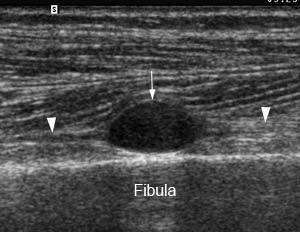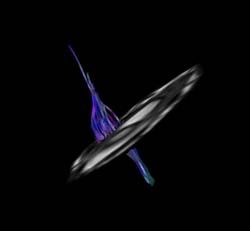Effective peripheral nerve imaging can improve quality of life
New developments in ultrasound and MRI mean that peripheral nerve imaging is easier than ever to perform and may bring higher sensitivity to lesion detection.
New developments in ultrasound and MRI mean that peripheral nerve imaging is easier than ever to perform and may bring higher sensitivity to lesion detection.
Because peripheral nerve disorders are relatively common in daily medical practice and can mimic a variety of musculoskeletal disorders, clinical evaluation (including a detailed history and physical examination) are critical to a successful diagnosis. Saturday's Special Focus Session on peripheral nerve imaging aimed to demonstrate the potential usefulness and recent advances of ultrasound and MRI in the assessment of nerve lesions.
Prof. Anne Cotten, head of musculoskeletal radiology at Lille University Hospital in France, focused on tumoral, pseudotumoral, and inflammatory disorders of peripheral nerves. She underlined the need for surgeons to know in advance about the source of tumor development and whether or not lesions are malignant or benign.

Ultrasound scan shows schwannoma (6 mm in diameter) of superficial peroneal nerve. (Provided by A. Cotten)
"These lesions are unusual, but imaging is fundamental, as it may represent the sole way to confirm the diagnosis, location, and extent of these nerve lesions. Differentiation among schwannomas, neurofibromas, malignant peripheral nerve sheath tumors, and pseudotumoral nerve lesions is of high importance for the treatment and prognosis of these patients," she said.
For the assessment of such lesions, ultrasound and MRI can be used in a complementary manner.
Ultrasound can be used for a dynamic examination, which is fundamental for the assessment of entrapment syndromes, in contrast to MRI. Entrapment neuropathies are common disorders resulting in pain, paresthesia, numbness, weakness, and muscle wasting. Symptoms can become debilitating and chronic over time.
"Ultrasound has excellent resolution, allowing the detection of very small nerve lesions, and it may provide quick, detailed imaging of the entire length of the major peripheral nerves, which is very useful for comparison between both limbs and for the assessment of patients with multiple nerve lesions, such as in neurofibromatosis," Cotten said.
MRI can depict abnormal signal intensities, enhancement, margins, and the shape of the peripheral nerves. More recent innovations include diffusion tensor imaging with tractography (fiber tracking). DTI and tractography have found clinical applications in neuroradiology, but their use in the musculoskeletal field is still emerging. DTI can provide valuable information about tissue microstructure and architectural organization by monitoring in vivo random microscopic motion of water protons and measuring fraction anisotropy and apparent diffusion coefficient values.
Such measurements for the differentiation between benign and malignant peripheral nerve tumors or for the assessment of Wallerian degeneration are potentially useful.

Fiber tracking of median nerve neuroma. (Provided by A. Cotten)
Tissue orientation and the course of the nerve can be visualized with tractography. Peripheral nerves have anisotropic diffusion propertie, and the orientation of the nerve fibers can be followed to trace specific neural pathways, which may be useful for the detection of nerve lesions.
"Sometimes pain is related to a nerve disorder, but with usual imaging on ultrasound or MR, nothing is visualized. Functional imaging might detect early abnormalities and help in the diagnosis of inflammatory or tumor-related disorders. However, future research has to be performed to assess the diagnostic performance of such techniques," Cotten said.
General and musculoskeletal radiologists should be aware of the usefulness of ultrasound and MRI in the assessment of nerve lesions and of new developments that may provide complementary information, she said.
Cospeaker Dr. Xavier Montet, a specialist in oncological imaging at Geneva University Hospital in Switzerland, pointed out that in Europe ultrasound costs six to eight times less than MRI.
"With ultrasound, you can follow the nerve to where it ruptures or to where there is a quantity of fluid or a hemotoma. This will be quicker and cheaper than using other techniques," he said. "While there are no huge advances in ultrasound technique, the availability of high-frequency probes, with high definition and resolution, means that small details within nerves can now be visualized."
Compared with five or 10 years ago, smaller lesions can now be visualized with ultrasound, making operating on lesions of 3 to 4 mm, for example, easier and quicker for surgeons than it would have been previously. This also reduces the length of hospital stay for patients, having an additional positive impact on budgets.
"Everyone seems to think peripheral nerve imaging is difficult to do, so the subject is neglected, but effective peripheral nerve imaging can really improve quality of life for a patient," Montet said. "If more radiologists are involved in it, then it means more patients can be seen. If a patient presents with pain in the leg suggestive of neuronal origin in general radiology, it takes only an extra two or three minutes to look at the nerves with ultrasound, which isn't done systematically at present."
MRI Study Suggests Shape of White Matter Hyperintensities May Be Predictive of Cognitive Decline
April 7th 2025Emerging research demonstrated that cognitive declines in memory, executive function and processing speed domains were associated with irregular shape of periventricular/confluent white matter hyperintensities.